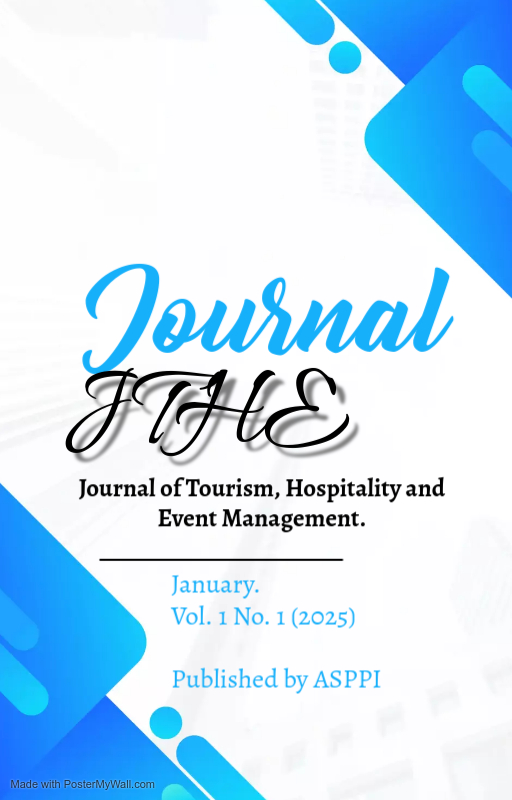INNOVATION IN MAKING SNACK BARS WITH INDONESIAN FLAVOR WITH MOLECULAR GASTRONOMY
Abstract
This research aims to develop flavor innovations for snack bars using Nusantara flavors and molecular gastronomy methods. So that it not only functions as a healthy snack but also can offer a culinary experience while still maintaining its nutritional content. In general, the flavors in snack bars are only chocolate, cheese, and fruit flavors. Still, in this study, the flavors used are the flavors of the archipelago where the flavors chosen are the ayam pop flavor originating from West Sumatra and also the grontol jagung flavor originating from Central Java. The research method used is a product development method in which existing products are developed again from aroma, taste, texture, and color with organoleptic testing consisting of hedonic quality tests to 3 expert panelists and hedonic tests to 32 general panelists. The results of this study indicate that snack bar innovation with archipelago flavors can be applied with molecular gastronomy, namely the dehydrate technique. But when viewed based on the aspects of taste, texture, color, and aroma, the taste of grontol jagung is superior with an average of 4.39. So that this innovation not only produces unique flavor variants but also can produce quality snack bars and does not eliminate the nutritional content. It is hoped that the results of this study can be a breakthrough and innovation by applying the flavors of the archipelago in a healthy snack.
Downloads
References
Hakim, I. N., and Hamidah, S. (2022). Peran Kuliner Tradisional dalam Mendukung Pemajuan Kebudayaan di Destinasi Pariwisata Prioritas Yogyakarta. MOZAIK HUMANIORA, 21(2), 193–208. https://doi.org/10.20473/mozaik.v21i2.29444
Wijaya, S. (2019). Indonesian food culture mapping: a starter contribution to promote Indonesian culinary tourism. Journal of Ethnic Foods, 6(1), 1–10. https://doi.org/10.1186/s42779-019-0009-3
DJKN Kemenkeu. (2022). Kondisi industri pengolahan makanan dan minuman di Indonesia. Direktorat Jenderal Kekayaan Negara.
Natalia, A. & T. G. W. (2014). Perancangan Buku Visual Molecular Gastronomy: the Culinary Alchemist. Jurnal Tingkat Sarjana Bidang Senirupa Dan Desain, 1, 8. www.flinkmag.com
Novianti, S. (2018). Meningkatkan Pengetahuan Makanan Sehat Pada Anak Melalui Kegiatan Cooking Di Tk Tunas Bangsa Balai Panjang Kecamatan Lareh Sago. Institut Agama Islam negeri Batusangkar.
Sari. (2016). Perbandingan Tepung Shorgum, Tepung Sukun dengan Kacang Tanah dan Jenis Gula Terhadap Karakteristik Snack Bar. Universitas Pasundan Bandung.
Pradipta, I. (2011). Karakteristik Fisikokimia dan Sensoris Snack Bars Tempe Dengan Penambahan Salak Pondoh Kering. Universitas Sebelas Maret.
Anggraini, N., Siti, S., and Valentinus, P. (2017). Karakteristik Fisikokimia dan Organoleptik Bakso Itik dengan Tepung Porang Sebagai Pengeyal. Jurnal Teknologi Pangan, 3(1), 155–160.
Section
License
Copyright (c) 2025 Nicholas Andrew Widjaya, Muhammad Rakhi Bayhaqi, Rudy Pramono, Rosianna Sianipar (Author)

This work is licensed under a Creative Commons Attribution-ShareAlike 4.0 International License.
Authors who publish with this journal agree to the following terms:
1) Authors retain copyright and grant the journal right of first publication with the work simultaneously licensed under a Creative Commons Attribution License (CC-BY-SA 4.0) that allows others to share the work with an acknowledgement of the work's authorship and initial publication in this journal.
2) Authors are able to enter into separate, additional contractual arrangements for the non-exclusive distribution of the journal's published version of the work (e.g., post it to an institutional repository or publish it in a book), with an acknowledgement of its initial publication in this journal.
3) Authors are permitted and encouraged to post their work online (e.g., in institutional repositories or on their website). The final published PDF should be used and bibliographic details that credit the publication in this journal should be included.





